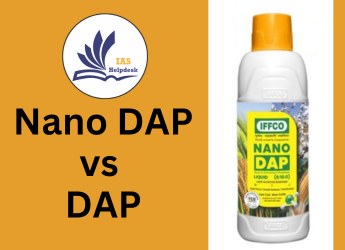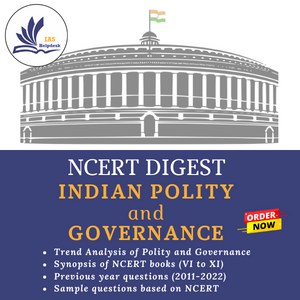Nano DAP vs. DAP
Description
Nano Di-ammonium phosphate
Description: In the recent Budget 2023-24, government has introduced Nano DAP. This article discusses about Di-ammonium phosphate, Nano DAP, significance and comparison.
Recently in the Budget, Finance Minister Nirmala Sitharaman, announced the
expansion of the application of Nano DAP on various crops in all agro climatic
zones.
What
is Di-ammonium
phosphate?
Di-ammonium phosphate (DAP) is a highly
water-soluble ammonium phosphate salt. It is commonly used as a fertilizer due
to its high phosphorus content, making it an excellent source of phosphorus for
plants.
DAP, or di-ammonium phosphate, is
the second most commonly used fertiliser in India after urea.
It is high in phosphorus (P) that
stimulates root establishment and development — without which plants cannot
grow to their normal size, or will take too long to mature. It is thus applied
just before, or at the time of sowing.
DAP is produced by reacting phosphoric acid
with ammonia. It typically contains around 18% nitrogen in the form of ammonium
and 46% phosphorus pentoxide (P2O5).
This combination of nitrogen and phosphorus
makes DAP an effective source of both nutrients for plant growth and
development.
It is widely used in agriculture to promote
healthy plant growth, increase crop yields, and improve soil fertility.
Additionally, DAP is sometimes used in
industrial applications, such as fire retardants, and in some food processing applications.
What is Nano DAP?
Nano
DAP, or nano di-ammonium phosphate, refers to a form of di-ammonium phosphate
(DAP) that has been processed into nanoparticles. These nanoparticles have
significantly smaller particle sizes compared to conventional DAP particles.
Indian Farmers Fertiliser
Cooperative’s (IFFCO’s) Nano DAP, containing 8% Nitrogen and 16% Phosphorus by
volume. Unlike conventional DAP, which comes in granular form, IFFCO’s Nano DAP
is in liquid form.
This tiny particle size
makes Nano DAP more efficient than its conventional counterpart, enabling the
fertiliser “to enter easily inside the seed surface or through stomata and
other plant openings”.
Better assimilation of the
fertiliser inside the plant system in turn leads to “higher seed vigour, more
chlorophyll, photosynthetic efficiency, better quality and increase in crop
yields.”
In addition to being more
efficient than conventional DAP, Nano DAP has a few other benefits.
First, it is more
pocket-friendly than its conventional counterpart. A 500 ml bottle of Nano DAP,
equivalent to a 50-kg bag of conventional DAP, is priced at only Rs 600
(compared to Rs 1,350 for the bag). Since the government provides significant
subsidies on DAP, the adoption of a more inexpensive fertiliser will likely be
a significant relief to the government’s subsidy burden.
Second, for farmers, Nano
DAP is also significantly more convenient. Simply put, 500 ml bottles are
easier to transport, store, and use than 50kg bags. The fertiliser is sprayed
on crops, with a 250-500 ml of DAP, dissolved in water, required per spray, per
acre.
Most importantly, however, India currently imports
significant quantities of fertiliser to meet domestic demand. The adoption of
domestically-produced Nano DAP — produced in Kalol, Gujarat — is set to
significantly reduce this import burden.
This revolutionary step will not only take Indian
agriculture forward in foodgrain production but it will also make India
self-reliant in fertiliser production

